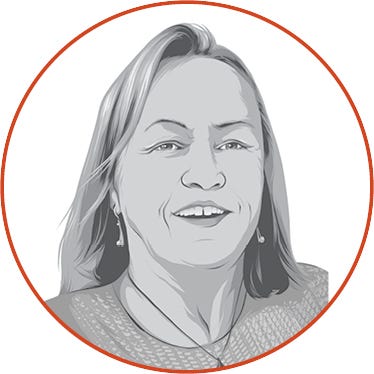-digital.jpg?width=700&auto=webp&quality=80&disable=upscale)
Welcome guests. The Yellow Rails & Rice birding festival started because Kevin Berken offered a combine ride to a couple of birders who asked permission to walk his fields. Today, the festival helps agriculture tell its story to those unfamiliar with farmers or the industry. Pam Caraway
Doves may deliver peace, but a nondescript little bird fond of nesting in rice fields is building a bridge between farmers and folks more accustomed to urban life.
Largely, perhaps, because the farmers involved have a captive audience when birders travel to south Louisiana for Yellow Rails & Rice.
Basco Eszeki of Silver Spring, Md., was not enthusiastic about listening to a farmer speak for an hour before the birders were let loose to add a yellow rail to their life lists. That farmer was Kevin Berken, who was involved in launching the festival with Louisiana State University ornithologists Donna Dittmann and Steve Cardiff.
“I like the idea of family farms,” Eszeki said. “Kevin put the concept into perspective. Having an eloquent farmer taking about it hit me.”
Eszeki is not the only city-based birder who left the birding festival newly dedicated to supporting U.S. farmers. In the 15 years that the festival has taken to various rice fields near Jennings, La., the farmers and USA Rice have been able to talk to birders from nearly every state and from several foreign countries. The 2023 festival in late October brought birders from 27 states.
Kane Webb, director of field services, sees the birding festival as a way to reconnect growers with people outside the ag industry.
“The connection between the public and farmers is kind of broken now that you can pull up anything you need from your phone,” Webb said. “This brings farmers and consumers face-to-face.”
And it gives those farmers and USA Rice the opportunity to answer consumer questions. The 95 birders who attended the 2023 event had plenty of questions: everything from corporate farms to pesticide use to trade.
On the ownership question, Berken noted that most rice farmers in south Louisiana are “tenant” farmers in that they rent the land for growing crops. But they’re nearly all family farmers.
On pesticide use, Webb provided information on seed technology that decreases pesticide use and conservation practices that reduce the amount of water needed to grow rice. “We’re getting better at making more with less,” Webb said.
And the question of trade with Cuba. Well, Webb noted, companies in the United States can sell rice to Cuba, but financial transaction laws between the two countries make the process difficult.
For those curious about the rotation between rice and crawfish, visitors learned that the two crops are complementary in the fields and in a bowl of jambalaya.
When Yellow Rails & Rice was started 15 years ago, Cardiff thought the priority for visitors was adding the elusive bird to their life lists, which is what birders keep to record species sightings. Turns out a ride in a combine was a bigger attraction. In the early years, Cardiff recalled, people nearly resorted to fist fights to land a seat in the combine. In recent years, attendees each have a number and a strict protocol regarding how the line forms for a combine ride.
An invitation to ride
A combine ride ultimately is what launched Yellow Rails & Rice. A couple birders driving through south Louisiana stopped when they saw a combine in a rice field. When the farmer pulled over to see to their needs, the birders asked for permission to walk his fields looking for birds.
“Wouldn’t it be easier to ride?” the farmer asked. It would and they did. They also reported the experience to Cardiff, and gave him Kevin Berken’s contact information.
“We became friends,” Cardiff said. Cardiff and Dittmann have long studied yellow rails, and were well aware of the benefits rice production offers to waterfowl.
“The birding and conservation communities like rice production because it provides a lot of benefits to birds,” Cardiff said.
The ornithologists, however, did not know the wide breadth of species that benefited.
“We came to the realization that the yellow rail is basically a reliable bird in the second rice harvest (known as the ratoon crop) in southwest Louisiana,” Cardiff said. Not long after that, the Yellow Rail & Rice Festival was hatched over dinner.
The festival helps the birding community learn more about yellow rails and other species. It also helps promote rice production as a way of preserving wildlife and bird habitat.
“A lot of marsh and grassland species are under threat because their habitat is diminishing,” Cardiff said “We want rice farmers to keep doing what they do because they help provide habitat. We’re opportunistic in that respect.”
At the close of the day, that’s a synergistic relationship.
“Steve and Donna said people would come for the yellow rail,” Berken said. “They go home and talk about rice.”
They also go home and look for USA-grown rice.
“Once we’re made aware, I think we’d all like to help out,” Eszeki said.
Farmer Paul Johnson, who drives the combine that’s harvesting during the festival, hears that promise from every rider.
“They’re curious about what we do,” Johnson said. “Everyone of them tells you they’re going to go back and look for the USA label.”
As a former chair of the Louisiana Rice Promotion Board, Berken is keenly aware of that indirect benefit to the industry.
“This is where birders, environmentalists and the agricultural industry can come together,” Berken said. Speaking frankly, he laid down the bottom line: “They know we’re not out here messing things up. And we know they’re not out to get us.”
About the Author(s)
You May Also Like






